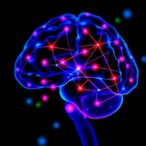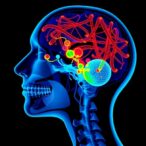
In a groundbreaking revelation poised to reshape our understanding of neonatal neurology, a recent large-scale population-based cohort study offers compelling evidence that seizures occurring in non-asphyxiated term infants carry significant long-term adverse consequences. This pioneering research, spearheaded by Jonsson, Hellström-Westas, Wikman, and colleagues, meticulously explores the intricate ramifications of early-life seizures, fundamentally challenging previously held assumptions about the benign nature of such events in infants who escape perinatal asphyxia.
The neonatal period is critical for brain development, a time marked by rapid growth and synaptic plasticity. Seizures during this phase have long been a clinical conundrum; while seizures associated with hypoxic-ischemic encephalopathy (HIE) have been extensively studied, the outcomes of seizures in infants without asphyxia have remained underexplored. Traditionally, the absence of asphyxiation was thought to mitigate the risk of neurological sequelae. However, the current study’s extensive dataset and rigorous analytical approach reveal otherwise, indicating that seizures in this seemingly lower-risk group still presage significant developmental challenges.
The study comprehensively tracks a cohort comprising thousands of term infants across a defined population, employing robust diagnostic criteria to delineate seizure events devoid of accompanying asphyxia. Utilizing advanced neuroimaging, electrophysiological monitoring, and longitudinal neurodevelopmental assessments, the researchers delineate a clear link between neonatal seizures and a spectrum of adverse outcomes including cognitive delay, motor impairments, and increased susceptibility to later-life epilepsy. These findings persist after adjusting for confounding variables such as socioeconomic status and maternal health factors.
.adsslot_1aZ5cBSHgv{width:728px !important;height:90px !important;}
@media(max-width:1199px){ .adsslot_1aZ5cBSHgv{width:468px !important;height:60px !important;}
}
@media(max-width:767px){ .adsslot_1aZ5cBSHgv{width:320px !important;height:50px !important;}
}
ADVERTISEMENT
One of the most striking facets of the research lies in the subtlety of the seizures experienced by these infants. Unlike pronounced convulsive seizures commonly observed in HIE-affected neonates, the seizures documented here often manifest as electrographic-only events or relatively mild clinical presentations, complicating timely diagnosis. This subtlety underscores the necessity of vigilant monitoring in neonatal intensive care units, particularly employing continuous amplitude-integrated electroencephalography (aEEG) and conventional EEG, tools that have become indispensable for early detection and intervention.
The pathophysiological mechanisms underpinning the lasting neurodevelopmental impact of neonatal seizures absent of asphyxia remain a focal area of scientific intrigue. The study postulates excitotoxicity and aberrant neuronal network formation as potential contributors. Neonatal seizures may initiate a cascade of altered synaptic connectivity and neuroinflammatory processes, ultimately disrupting critical windows of neurodevelopment. This notion aligns with emerging paradigms in developmental neurobiology, which emphasize the profound and nuanced effects of early synaptic disturbances.
From a clinical perspective, these revelations hold profound implications for the management and prognostication of neonatal seizures. Historically, therapeutic efforts often concentrated on treating seizures secondary to evident hypoxic injury, occasionally relegating isolated seizures in otherwise healthy newborns to a lower priority. This research advocates for a reevaluation of neonatal seizure protocols, suggesting that even in the absence of asphyxia, aggressive diagnostic vigilance and potentially early therapeutic intervention may be warranted to mitigate long-term neurodevelopmental impairments.
Moreover, the study casts light on the potential need to revise clinical follow-up guidelines for infants who experience neonatal seizures despite unremarkable birth histories. Longitudinal surveillance encompassing neuropsychological testing, motor function evaluation, and epilepsy screening emerges as vital. The breadth and persistence of adverse outcomes documented necessitate multidisciplinary approaches encompassing pediatric neurologists, developmental specialists, and rehabilitation services to optimize outcomes.
Notably, the epidemiological strength of the cohort design enables high external validity, permitting extrapolation of findings to broader neonatal populations across diverse healthcare settings. The utilization of population-based registries coupled with advanced data linkage technologies illustrates a paradigm for future neonatal research, facilitating holistic insight into subtle but pivotal clinical phenomena.
In parallel, the investigation highlights an urgent need for innovation in neonatal seizure therapeutics. Current antiepileptic drugs (AEDs) often demonstrate limited efficacy and pose risks related to neurotoxicity during a critical period of brain maturation. The elucidation of the molecular substrates of seizure-related damage sans asphyxia opens avenues for targeted pharmacological interventions aimed at modulating excitatory-inhibitory balance and inflammatory pathways without impeding developmental processes.
Beyond the clinical and mechanistic dimensions, the societal ramifications of the study are profound. By delineating an underrecognized source of pediatric neurological disability, this research underscores the necessity for enhanced prenatal and perinatal care frameworks, early infancy surveillance programs, and resource allocation toward early intervention services. Health policy planners and perinatal care providers must heed these findings to forestall a potentially substantial public health burden.
The ethical considerations surrounding early diagnosis and treatment also come into focus. Balancing the imperative to intervene promptly against the risks of over-treatment in a vulnerable population requires nuanced clinical judgment supported by evolving evidence. The study’s outcomes may catalyze refinement of consensus guidelines, bridging gaps between evidence and practice, and fostering shared decision-making between clinicians and families.
As neonatal neurology marches into an era of precision medicine, the integration of genetic and biomarker profiling with clinical phenotyping promises to refine risk stratification further. While the present study focuses on phenotypic outcomes, future research might illuminate genetic susceptibilities or resilience factors modulating seizure consequences, paving the way for individualized therapeutic schemas.
In sum, Jonsson and colleagues have furnished the field with compelling, systematically derived evidence that seizures in non-asphyxiated term infants are far from innocuous. Their work articulates a clarion call for heightened clinical vigilance, ambitious research agendas, and a reimagined framework for neonatal care. By illuminating the hidden burdens of neonatal seizures, this study stands to transform preventive strategies, optimize neurodevelopmental trajectories, and ultimately improve the life course of affected individuals.
For clinicians, researchers, and policymakers alike, these findings evoke a paradigm shift, urging an acknowledgment of neonatal seizures as a critical determinant of long-term neurological health—not just in contexts marked by hypoxic injury but across the full spectrum of neonatal presentations. The ripple effects of this knowledge will undoubtedly resonate through neonatal intensive care units, research laboratories, and public health domains in the years to come, heralding a new frontier in neonatal neuroprotection.
Subject of Research: Adverse long-term neurodevelopmental outcomes following neonatal seizures in non-asphyxiated term infants
Article Title: Adverse long-term outcomes following seizures in non-asphyxiated term infants: A population-based cohort study
Article References:
Jonsson, M., Hellström-Westas, L., Wikman, P. et al. Adverse long-term outcomes following seizures in non-asphyxiated term infants: A population-based cohort study. Pediatr Res (2025). https://doi.org/10.1038/s41390-025-04225-4
Image Credits: AI Generated
DOI: https://doi.org/10.1038/s41390-025-04225-4
Tags: advanced neuroimaging in neonatal researchdevelopmental challenges after neonatal seizuresearly-life seizures and brain developmenthealthy newborn seizures consequenceshypoxic-ischemic encephalopathy vs neonatal seizureslong-term risks of neonatal seizureslongitudinal assessments of infant developmentneonatal neurology research findingsneurological sequelae in term infantsnon-asphyxiated infant seizure outcomespopulation-based cohort study on seizuresseizure events in non-asphyxiated infants



